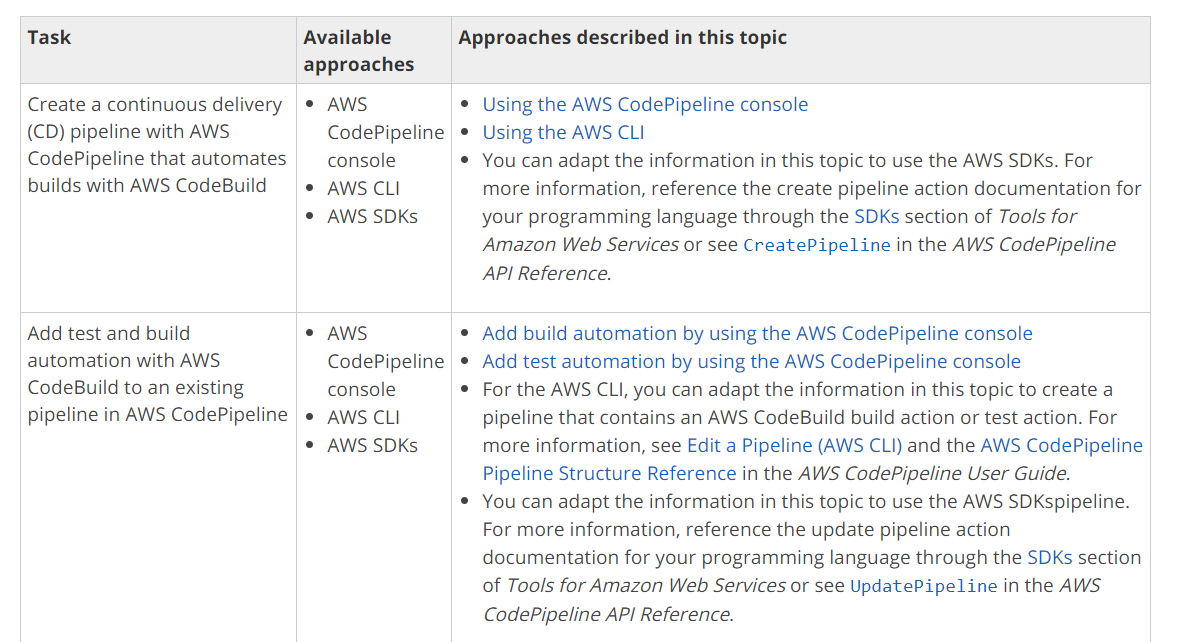Automating CI/CD Process with AWS Resources
Question
Your team has developed an application that makes use of AWS resources.
In order to provide frequent releases to the customer, you are required to automate the CI/CD process.
Which of the following can be used for this purpose?
Answers
Explanations
Click on the arrows to vote for the correct answer
A. B. C. D.Answer - D.
Automated continuous delivery pipeline.
AWS CodeStar accelerates software release with the help of AWS CodePipeline, a continuous integration and continuous delivery (CI/CD) service.
Each project comes pre-configured with an automated pipeline that continuously builds, tests, and deploys your code with each commit.
Option A is incorrect because pipelines are created using the "AWS Code pipeline" and "AWS Code deploy" automates software deployments to a variety of compute services such as Amazon EC2, AWS Fargate, AWS Lambda, and your on-premises servers.
Option B is incorrect since AWS CodeCommit does not have the facility to carry out the build.
Options C is incorrect since the CodePipeline service is used for building build pipelines.
For more information, please refer to the below URL-
https://aws.amazon.com/codestar/features/Creating a pipeline in the Code pipeline is not enough to automate the release process you need to integrate with code commit,
Code build and then deploy your code through Cloudformation/Elastic Beanstalk etc.
Whereas in Code star Each project comes pre-configured with an automated pipeline that continuously builds, tests, and deploys your code with each commit.

In order to automate the CI/CD process, there are multiple services offered by AWS that can be utilized. The four options provided in the question are as follows:
A. Create a pipeline using AWS CodeDeploy. Configure a stage for Unit testing as well in the pipeline. AWS CodeDeploy is a fully managed deployment service that automates software deployments to a variety of compute services like EC2 instances, Lambda functions, and on-premises servers. However, it doesn't provide a complete CI/CD pipeline, but can be a part of the pipeline. In this case, we can create a pipeline using AWS CodeDeploy and configure a stage for Unit testing in the pipeline.
B. Use AWS CodeCommit to host your code repository. Use the build tool in AWS CodeCommit to build your pipeline. AWS CodeCommit is a fully-managed source control service that hosts secure Git-based repositories. It can be used to store source code and other artifacts, and it integrates with other AWS services like AWS CodeBuild and AWS CodePipeline to enable continuous integration and continuous delivery. In this case, we can use AWS CodeCommit to host our code repository and use the build tool in AWS CodeCommit to build our pipeline.
C. Create a Pipeline in the AWS CodeBuild Service. AWS CodeBuild is a fully-managed build service that compiles source code, runs tests, and produces software packages that are ready to deploy. It can be used to build a CI/CD pipeline that integrates with other AWS services like AWS CodeCommit and AWS CodePipeline. In this case, we can create a pipeline in the AWS CodeBuild service.
D. Create a pipeline using AWS CodePipeline along with AWS CodeStar service. AWS CodePipeline is a fully-managed continuous delivery service that automates the release process for applications. It can be used to create a CI/CD pipeline that integrates with other AWS services like AWS CodeCommit and AWS CodeBuild. AWS CodeStar is a service that simplifies the process of developing and deploying applications on AWS by providing templates for common development environments and pre-configured pipelines for deploying applications to AWS services. In this case, we can create a pipeline using AWS CodePipeline along with AWS CodeStar service.
To summarize, all four options can be used for automating the CI/CD process, but the choice depends on the specific needs of the application and the team. Option A and B focus on using AWS CodeDeploy and AWS CodeCommit respectively, while option C and D focus on using AWS CodeBuild and AWS CodePipeline respectively. It is also possible to combine these services to create a customized pipeline that fits the specific requirements of the application.